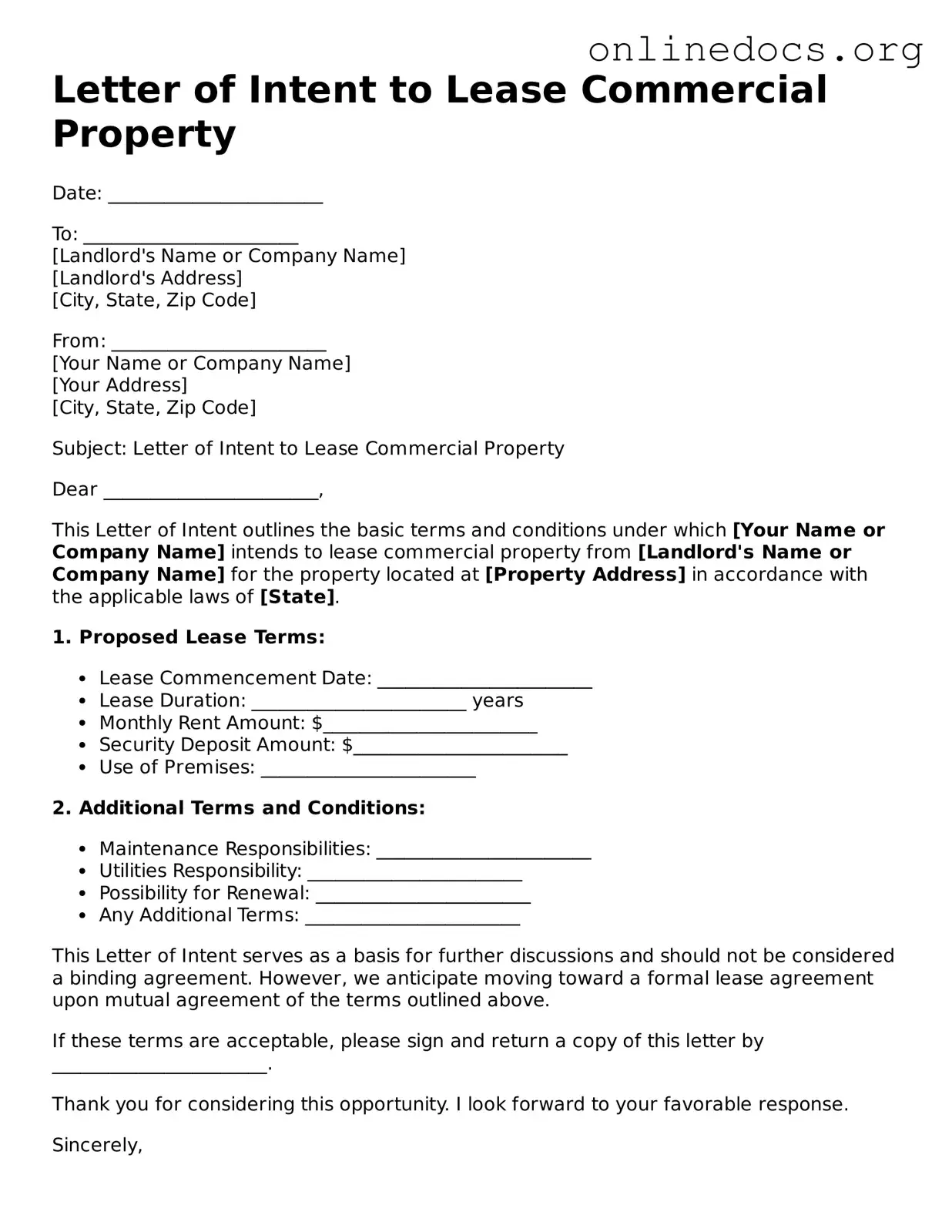The Letter of Intent to Lease Commercial Property serves as a preliminary agreement between a landlord and a prospective tenant. It outlines the basic terms and conditions of a potential lease, similar to a Memorandum of Understanding (MOU). An MOU is an informal agreement that establishes mutual intentions between parties. While it may not be legally binding, it clarifies expectations and can serve as a foundation for a more formal contract.
Another document akin to the Letter of Intent is the Lease Agreement. This legally binding contract details the specific terms of the lease, including rent, duration, and responsibilities of both parties. Unlike a Letter of Intent, which is often non-binding, a Lease Agreement is enforceable in court and provides comprehensive terms that govern the landlord-tenant relationship.
A Term Sheet is also similar to a Letter of Intent. It summarizes the key points of a proposed transaction, including financial terms and conditions. While a Term Sheet is often used in business deals, its purpose parallels that of the Letter of Intent by providing a clear outline of what both parties hope to achieve before drafting a formal agreement.
Consider the Purchase Agreement, which is used in real estate transactions. This document outlines the terms of sale for a property and is legally binding. Like a Letter of Intent, it serves to clarify the intentions of both parties, but it is focused on the sale rather than leasing. Both documents aim to ensure that all parties are on the same page before proceeding with the transaction.
A Non-Disclosure Agreement (NDA) is another related document. While it serves a different purpose, both an NDA and a Letter of Intent can be used in the early stages of negotiations. An NDA protects sensitive information shared between parties, ensuring that details discussed in the Letter of Intent remain confidential as the parties move forward with their discussions.
The Letter of Intent can also be compared to a Letter of Understanding. This document outlines the basic agreement between parties and can be used in various contexts, including business partnerships. Like a Letter of Intent, it is often non-binding and serves to clarify the intentions of both parties before formalizing a more detailed agreement.
For parents considering homeschooling, understanding the requirements for a Homeschool Letter of Intent can be quite beneficial. This essential document not only informs the state of one's intentions but also serves as a guide to the necessary steps. To learn more, visit the key details about the Homeschool Letter of Intent requirements.
A Partnership Agreement is another document that shares similarities with a Letter of Intent. This agreement outlines the terms of a business partnership, including roles, responsibilities, and profit-sharing. While a Partnership Agreement is more comprehensive and legally binding, both documents aim to establish clear expectations and intentions between parties involved.
The Memorandum of Lease is closely related to the Letter of Intent. This document is often used to summarize the key terms of a lease agreement, providing a snapshot of the essential details. While a Memorandum of Lease is typically recorded with public authorities, the Letter of Intent serves as a precursor, setting the stage for the lease negotiations.
Lastly, a Confidentiality Agreement can be likened to a Letter of Intent in terms of protecting sensitive information during negotiations. While the Letter of Intent outlines the terms of a potential lease, a Confidentiality Agreement ensures that any proprietary or sensitive information exchanged remains protected. Both documents are crucial in the negotiation process, safeguarding the interests of all parties involved.
